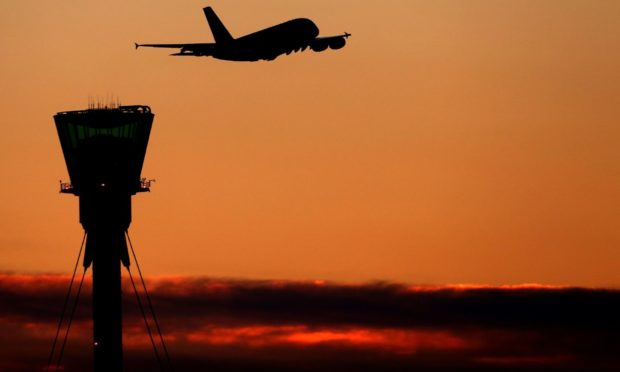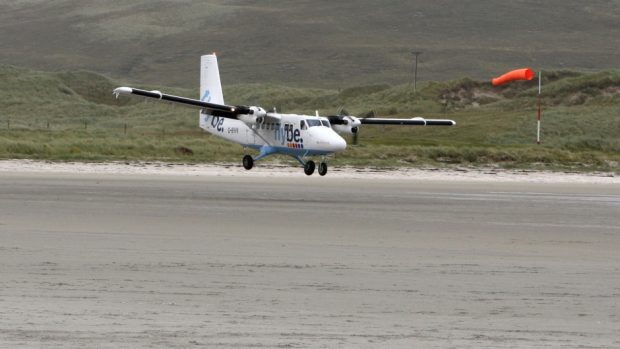Plans for remote control towers to be used at airports serving island communities are “unsafe and untested” could cost lives, MSPs have been warned.
The Scottish Parliament’s Public Petitions Committee heard from campaigners urging Highlands and Islands Airports Ltd (HIAL) to halt its plans to centralise air traffic control services.
The company, which is 100% owned by Scottish ministers and runs 11 airports, says the plan will solve recruitment issues and make it sustainable in the long-term.
But opponents, which include community councils based near some of the airports, say it could cause delays to “lifeline” flights.
The committee heard from two witnesses supporting a petition against the plans, and they said there should be a greater focus on recruiting from local communities.
Peter Henderson, who worked at Kirkwall Airport in Orkney for 18 years as an air traffic assistant, said there is a risk emergency “blue light” medical flights could be disrupted.
I don’t want people in my community made more ill or dying because of remote links which are highly unstable.”
Campaigner Peter Henderson to MSPs
Mr Henderson was part of team that got ambulance and emergency search and rescue flights in and out of the airport.
“Two of my colleagues have been taken as category A blue light ambulance flights from Kirkwall to Aberdeen for life-or-death treatment and fortunately survived.”
Mr Henderson said he could not “with a clear conscience in any way accept” that the new arrangement would be safe.
He added: “I don’t want people in my community made more ill or dying because of remote links which are highly unstable.”
He said airport control towers have visibility of around 15 miles on an average day, whereas the remotely-monitored cameras would have a narrower view of only three miles.

Mr Henderson said: “We’re reliant on being able to see things.
“Why send all of that 100 miles through cables all through the Highlands for a compressed view?
“It’s just wrong. And it’s unsafe and it’s untested and we’re being experimented on.”
He said he had left HIAL because he “could not cope” with the way it was being run, and he claimed current employees have been prevented from speaking out.
Mr Henderson said HIAL was trying to “branch out” in areas where it had no expertise, skill or ability.
He accused the company of offering “living laboratories for experimenting on technology that’s in its infancy”.
He added: “What we do now is tried and tested and 100% safe and it’s been learned the hard way. We are only in the infancy of remote towers.”
John Doig, who presented the petition on behalf of Benbecula Community Council, said there has been a lack of consultation with communities the move would effect.
He said the proposed changes would mean bad weather could cause “significant delays to scheduled or mail flights to stop them from arriving and departing at the same time”.
In this world of remote working I would like to see that as an opportunity to build the local economy in remote communities and this seems to be the opposite. I don’t think centralisation anywhere is a terribly positive thing.”
Committee convener Johann Lamont
Committee convener Johann Lamont said the witnesses’ evidence had been “extremely useful”, and further views will be sought from the Scottish Government, pledging to write to Transport Secretary Michael Matheson.
Ms Lamont said: “In this world of remote working I would like to see that as an opportunity to build the local economy in remote communities and this seems to be the opposite.
“I don’t think centralisation anywhere is a terribly positive thing.”
HIAL says ‘safety will be built in’
A spokesman for HIAL later responded to the comments, saying its chosen system was the best approach for the future of the company and that “doing nothing was not an option”.
He said: “Digital tower technology has been operational since 2015.
“Currently, Norwegian, Swedish, German, Dutch, Danish, Belgian, Irish and UK national Air Navigation Service Providers (ANSP) have either implemented or are in the process of implementing, this technology.
“Indeed, a state of the art surveillance centre in Norway will be opening in the very near future, which will provide air navigation services for 15 airports operated by Avinor, many of which are located in remote areas of the Arctic.
“Our project will have safety, resilience and contingency built in. Our regulator would not permit us to do otherwise.”
